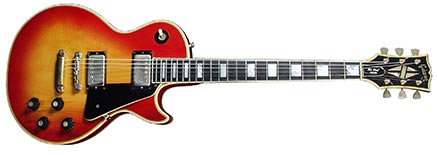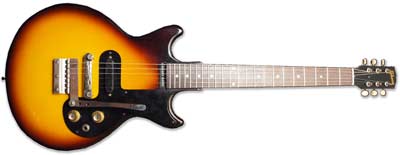
Gibson have produced more iconic models than any other manufacturer. And a lot of them are solid bodies. After decades of making hollow body guitars, the advent of pickups allowed Gibson president Ted McCarty to come out with a series of solid body electric guitars that would endure for decades, and most of which scream ROCK. The The Les Paul - created in conjunction with guitar legend Les Paul, but later popularised by the late sixties British blues rock scene. The Flying V and Explorer - outrageous in 1958, but almost compulsory to the metal bands of the early 1980s. And the double cutaway batwing SG. What else says 70s hard rock more than that. Typified by a mahogany body and glued in neck, with humbucking pickups. These Gibson guitars produce the natural dark rich tones that made Gibson solid bodies famous.
Gibson continually developed new models, some were just variations of existing guitars, and many were short lived. But even amongst the less well known Gibson solid bodies, there were some exceptional guitars.

Gibson made some exceptional solid bodies at the Kalamazoo plant in the 1950s, 60s and 70s. High end flashy models had humbucking pickups, gold hardware, ornate headstock inlays and neck markers. Guitars such as the L5S, Les Paul Custom, SG Custom and RD Artist had the best features Gibson could offer, with a price tag to match. Naturally these were constructed from very fine tone woods; typically Honduras mahogany with a Brazilian rosewood fretboard, though increasingly other woods such as maple were employed as the 1970s progressed.

Although Gibson's top end guitars built the company's reputation, it was much cheaper guitars that the majority of players bought. Very many guitarists learned to play on a Les Paul Junior or Melody Maker etc. All great guitars. These instruments often, (especially in the 50s and 60s) shared construction, woods, nitrocellulose finish and also some components with higher end models. But they lacked ornamentation: typically no binding, just dot inlays, silk-screened logos rather than pearl inlaid logos, and so on. Many lower-end guitars had single coil pickups with plastic covers. In the 1970s, Gibson tried different construction techniques: bolt on necks, pickguard-mounted electronics, and a number of different pickup configurations, producing several distinct new models in the process.
